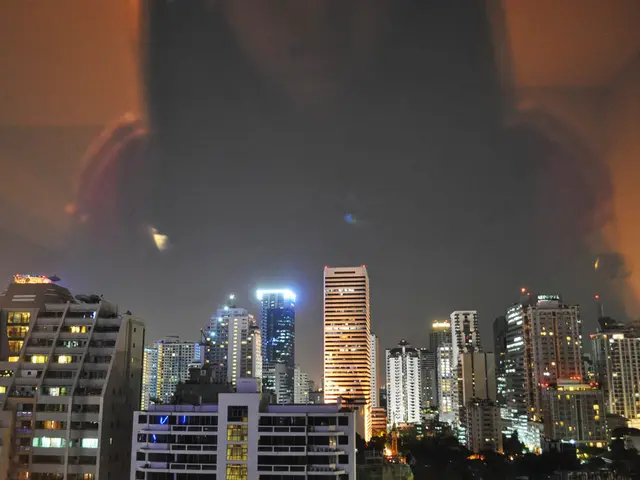Winds of Change: Over 1.48 Million Euros in Payments for Silenced Power in Thuringia
Large sum of 1.48 million euros allocated for 'Phantomstrom' project in Thuringia region. - Spending of EUR 1.48 million on non-existent power sources in Thuringia
Hey there! Let's dive into the world of renewable energy in Thuringia, shall we?
Last year, operators of wind, solar, and other green energy projects in this region received nearly 1.48 million euros in compensation for energy cuts they experienced due to the actions of grid operators. This info comes straight from the Federal Network Agency. Now, you might be wondering, what gives? These "redispatch measures" occur when grid operators control the energy flow to prevent grid overload.
According to Thuringia's grid operator, Thuringian Energynet (TEN), there were 95 grid interventions last year, totaling 492 hours, during which green energy plants had to hush their power. That's about two-thirds less than the previous year! In 2023, TEN reported a total of 282 interventions.
So, who is thumbing down the energy party? Well, last year, 60 of these interventions were prompted by TEN's high-voltage grid issues, says a TEN spokesperson. A whopping 1,047 megawatt-hours of energy was cut. On the other hand, 35 interventions were ordered by 50Hertz, a transmission network operator active in eastern Germany, Berlin, and Hamburg. You see, transmission networks deal with the highest voltage levels, up to 380,000 volts, so it's no surprise the energy cut here was more substantial: On 50Hertz's orders, a staggering 21,596 megawatt-hours of renewable energy was snuffed out in Thuringia alone.
Now, listen up! Thuringia is essentially a green energy passing-through zone. A 50Hertz spokesperson spilled the beans to the German Press Agency. Now, guess who's forking over the biggest bucks for these curbed energy heroes? That would be the operators of offshore and onshore wind farms up north in Germany. The average share of renewable energy in TEN's network hovers around 55% per year, says the company. There are no local hotspots for energy cutbacks in the TEN network, and the plants that get turned off depend entirely on how much power needs to be whittled away.
Last year, the preliminary total cost for managing these network disturbances across Germany was around 2.77 billion euros, according to the Federal Network Agency. Guess who picks up the tab? You got it—grid operators, who eventually pass the cash onto consumers as part of electricity charges. Wind farms were the most frequent victims of these energy curtailments.
So, what's causing all these curtailments? Well, factors like grid constraints arising from various factors, renewable energy expansion outstripping grid upgrades, weather patterns that boost green energy production, market and economic factors, and regulatory frameworks come into play. Grid operators' strategies, investments, and collaborations also significantly impact curtailments' frequency and severity.
There you have it! Green energy and power cuts—it's the circle of life! Keep walking the green path, my friend. The future is bright, even if temporarily dimmed! *wink wink*
Community policy should consider implementing measures to reduce the occurrence of energy curtailments in renewable-energy industries, especially in areas like Thuringia, to ensure the continuity of vocational training programs for future energy professionals. Increased investments in renewable-energy infrastructure and collaborations between various industries, including finance, can help mitigate the effects of grid constraints and ensure a reliable supply of energy in the future.







